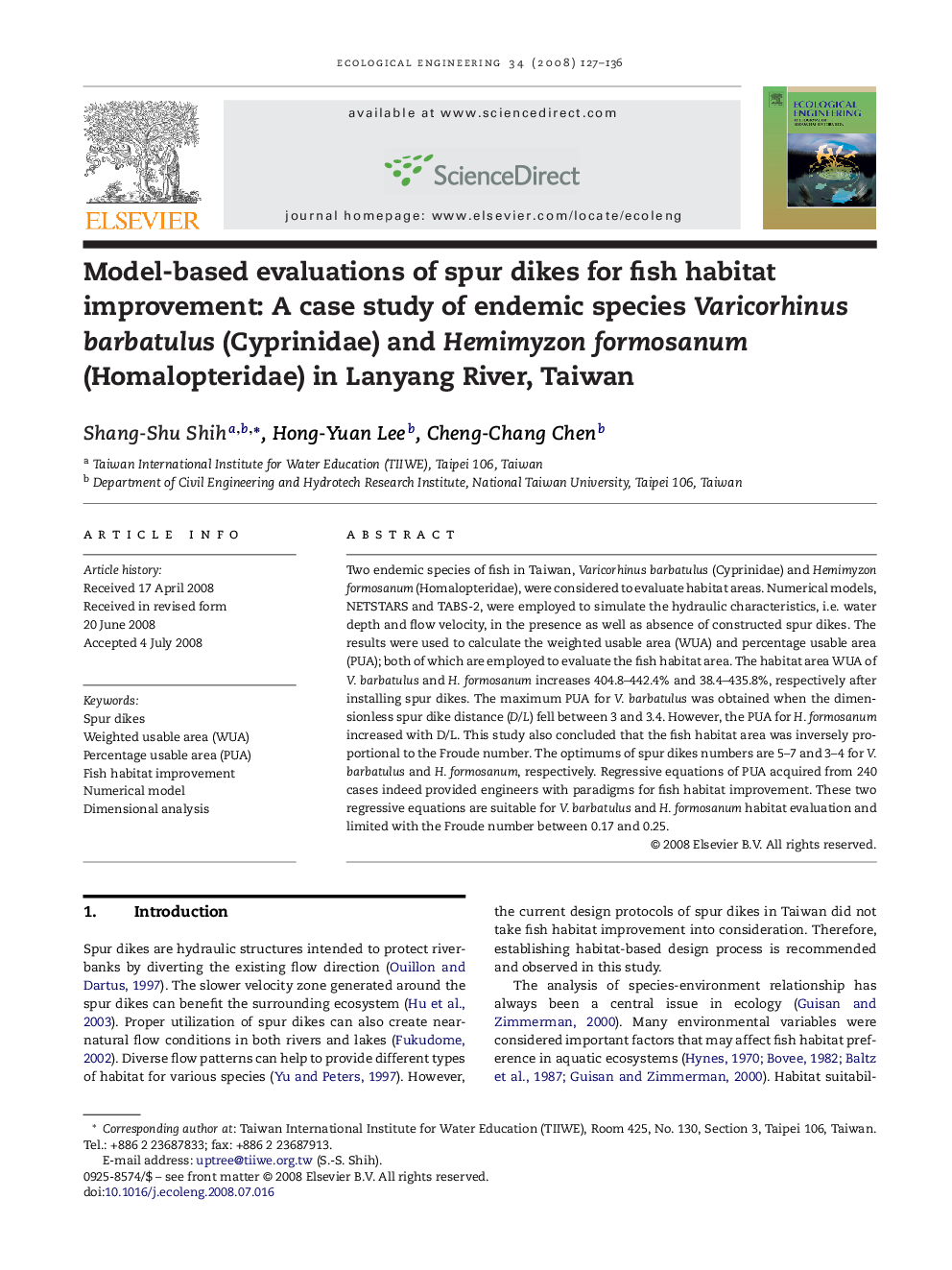| کد مقاله | کد نشریه | سال انتشار | مقاله انگلیسی | نسخه تمام متن |
|---|---|---|---|---|
| 4390608 | 1305182 | 2008 | 10 صفحه PDF | دانلود رایگان |

Two endemic species of fish in Taiwan, Varicorhinus barbatulus (Cyprinidae) and Hemimyzon formosanum (Homalopteridae), were considered to evaluate habitat areas. Numerical models, NETSTARS and TABS-2, were employed to simulate the hydraulic characteristics, i.e. water depth and flow velocity, in the presence as well as absence of constructed spur dikes. The results were used to calculate the weighted usable area (WUA) and percentage usable area (PUA); both of which are employed to evaluate the fish habitat area. The habitat area WUA of V. barbatulus and H. formosanum increases 404.8–442.4% and 38.4–435.8%, respectively after installing spur dikes. The maximum PUA for V. barbatulus was obtained when the dimensionless spur dike distance (D/L) fell between 3 and 3.4. However, the PUA for H. formosanum increased with D/L. This study also concluded that the fish habitat area was inversely proportional to the Froude number. The optimums of spur dikes numbers are 5–7 and 3–4 for V. barbatulus and H. formosanum, respectively. Regressive equations of PUA acquired from 240 cases indeed provided engineers with paradigms for fish habitat improvement. These two regressive equations are suitable for V. barbatulus and H. formosanum habitat evaluation and limited with the Froude number between 0.17 and 0.25.
Journal: Ecological Engineering - Volume 34, Issue 2, 2 September 2008, Pages 127–136